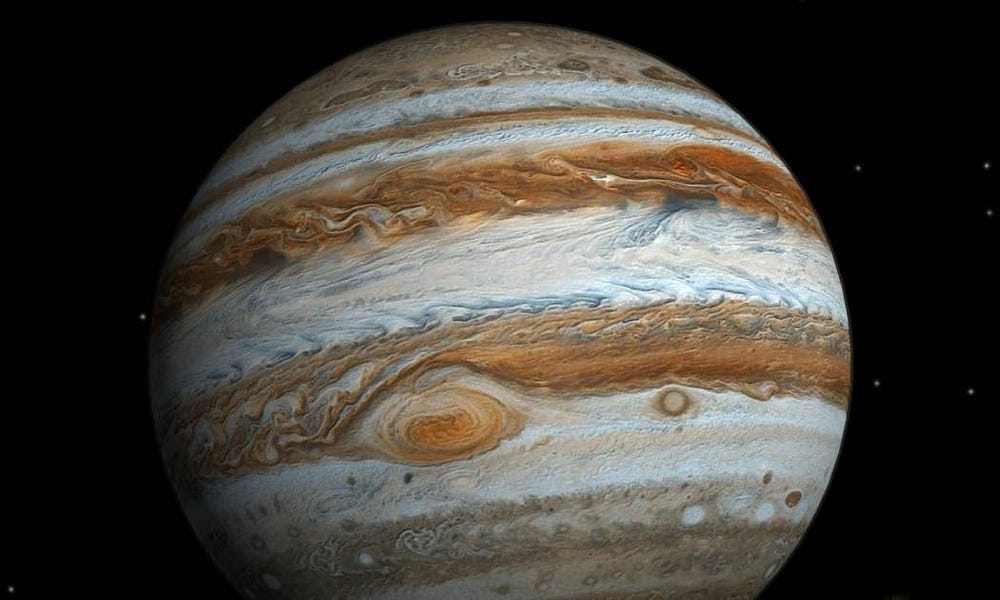
A recent study of the great red spot on the surface of Jupiter suggests that there could be water in the atmosphere of Jupiter. This experimental observation matches fairly with the theoretical and Computational estimates of water on Jupiter.
This discovery was made possible by the use of iSHELL a new infrared spectrograph used at the NASA infrared radio telescope facility, which is attached to the keck telescopes in Mauna Kea, Hawai. Estimates peg that the amount of Liquid water in the Jovian atmosphere may even be twice than that found on the Earth.
Now the onus is on the Juno space probe to give us more conclusive observations that can finally prove without doubt the existence of liquid water in the Great Red spot. This also piques our interest as where else can one find liquid water except the planet we call Earth.
Moon !
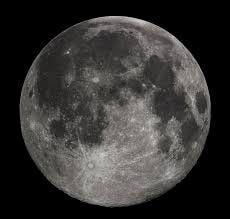
Though moon is our nearest neighbor it is often said that we know more about Mars than we do about Moon. The Temperatures on the moon may fluctuate from -200 F to + 200 F depending upon weather the sun is shining on its surface or not. Also it does not have any thick atmosphere that can keep liquid water from evaporating. It is also a fairly dry place to look at.
Early astronomers who saw plains on the surface of moon thought them to be dried up lakes and ocean and many of the Lunar geology is named after seas and oceans. Even though Moon was visited by humans extensively in the 70’s, water has remained elusive.
In 2008 the Indian Space Research Organization launched its first space probe the Chandrayaan -1. Aboard the Chandrayaan was an instrument called the M3 or the Moon Minerology Mapper that was developed by NASA. The M3 was specifically designed to know more about the composition of rocks, its structure and whether any of them contained Liquid water or water containing crystals.
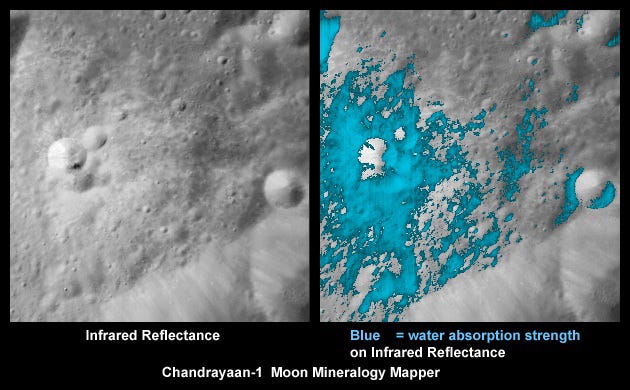
By irradiating infrared light on the surface of the moon and observing the light reflected back to us we could detect the presence of liquid water pools beneath the surface of moon in the Polar regions. These are the places where the light does not shine due to the axial geometry. Being buried under the ground along with ice prevents it from being exposed to harsh climates.
This region has become a point of interest as it can be transformed into a space hub for future manned missions to Moon and beyond. Also, ISRO’s Chandrayaan-2 that is due to launch in January will attempt to land a rover in this region to further investigate the Lunar Mineralogy.
Mars.
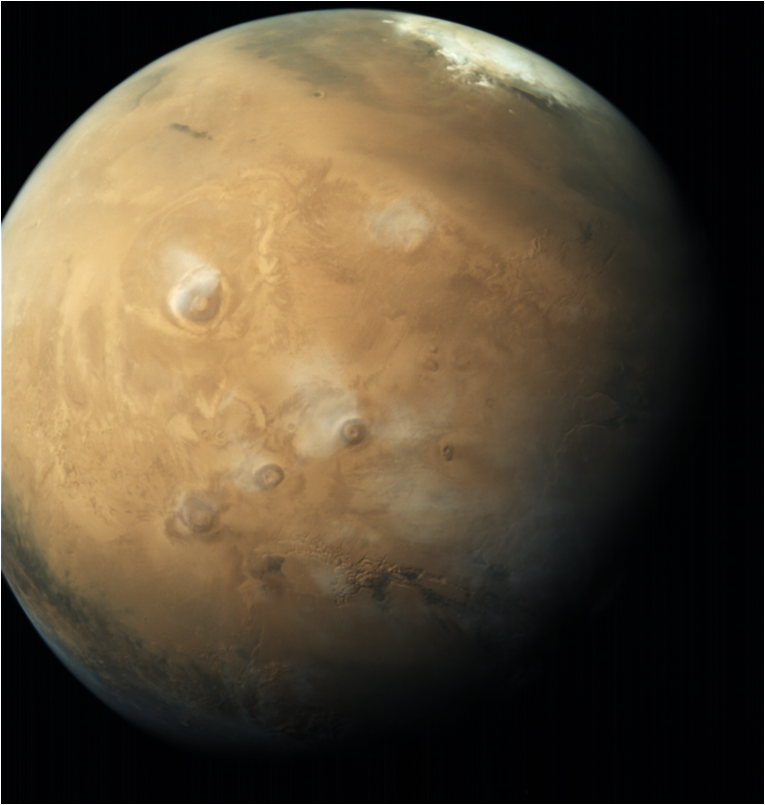
Mars has been an object of interest for the astronomers since Galileo Galilei first made the telescope. In that era valleys that ran across the length of the planet were perceived as canals made by an advanced civilization on Mars that had populated the planet by deriving water from the polar ice caps.
We now know that the above hypothesis is far from the truth. Remote observations and Martian geology has many times indicated the presence of liquid water in the early years of the planet. There also have been recent observations that suggest that liquid water might have flown on the surface of Mars. Though enough confidence to prove this beyond doubt never came up until recently.
Mars express Orbiter a mission by the European Space Agency discovered a lake of water in the south pole of the Mars. This discovery used the on board Radar know as the Marsis. It discovered a liquid water lake 1.5 km below the ice surface. The lake is believed to be 20 Km across in length. The water in it is mostly brine i.e. extremely salty. This might be the key that it has survived in there at the first place due the enhanced physical characteristics impurities provide. Mars is the place to go if salt water is your thing. :-)
Europa!
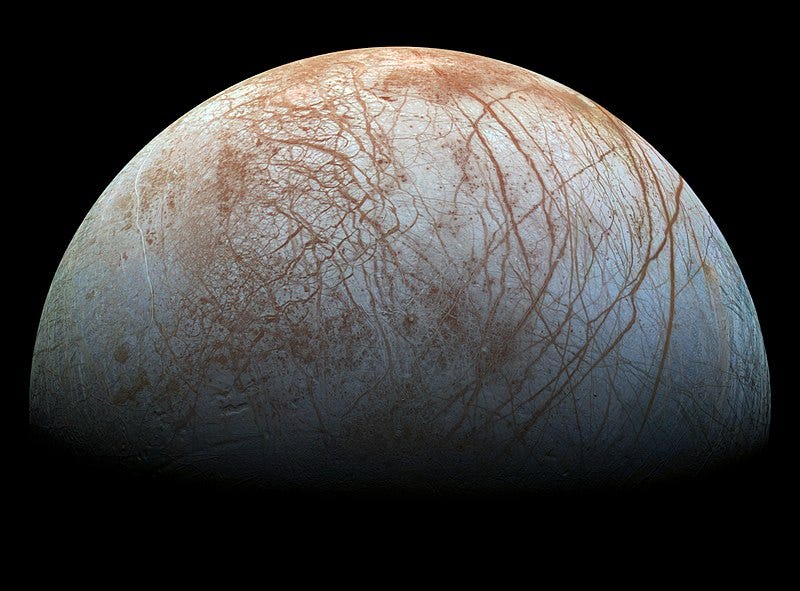
Europa is one of the larger moons of the Jupiter. It’s size is comparable to our own moon. Its surface temperatures are well below the freezing point of water due to its large distance from our sun. It is not only a candidate for a place full of liquid water but its entire subsurface could contain liquid water making a huge planet wide ocean below the frozen upper crust.
Even though Europa may seem too cold for liquid water to exist there is a phenomenon called tidal heating that makes Europa ideal place for water. In Earth we have tides in oceans due to the gravitational force of the Moon, in somewhat similar fashion tidal forces are felt by Europa due to the strong gravity of Jupiter. These tidal forces are strong enough to stretch and compress the entire planet as it orbits the Jupiter. This stretching and compression causes heat to develop in the interiors of the planet that can keep the water in liquid state. The fissures that can be observed on the surface of Europa are also largely due to this phenomenon.
There is also an indication that there may be geological features like plate tectonics that float on liquid water instead of magma in case of earth. Also cryogeysers that spurt out water and Ice like volcanoes spurt out Lava on earth have been observed by the Hubble Space Telescope.
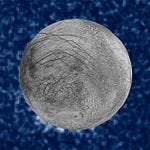
Also the atmosphere of Europa is largely constituted to be made up from oxygen. This makes the geology apt not just for liquid water but probably for extra terrestrial life on it.
Future missions like JUICE ( Jupiter Icy- moon Explorer) has planned fly by’s to Europa. NASA is planning a mission called Europa Clipper that aims to drill into the surface of Europa to examine its upper surface composition while also trying to make drill to the Ocean underneath if any.
Enceladus.
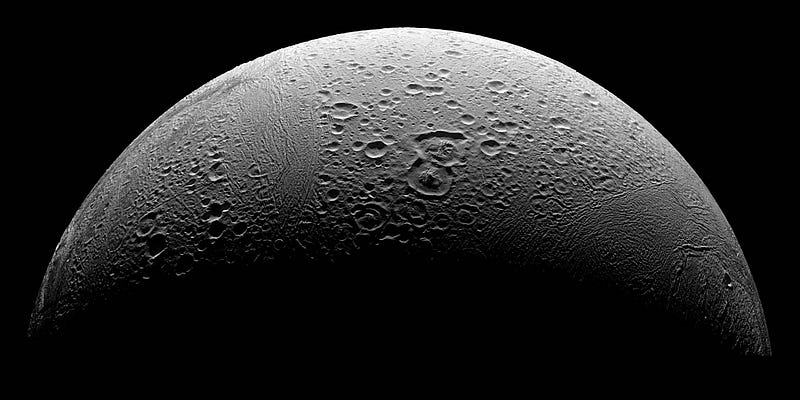
Enceladus is another icy haven that orbits Saturn. It is the sixth largest moon of Saturn. Its geology is quite similar to that of Europa. Also similar plate tectonics and tidal heating phenomenon is predicted for Enceladus.
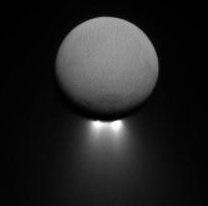
What makes Enceladus more interesting than Europa is that it has been extensively studied up close by the Cassini mission of NASA. The plumes of Enceladus shoot up to several kilometers in the air. The plumes contain not only water but also hydrocarbons an essential part for the chemistry of life. Enceladus has potential to have oceanic life form and an underwater ecosystem.
To answer the Question :- Are we alone? has many interesting places in our own solar system. More places are being added to this list with time and quite rapidly in recent years.
Hopefully this question will then be replaced by Where is Everyone?
Comments
Post a Comment